Telespazio to play key role in satellite servicing market
Friday, 24 June 2022 20:13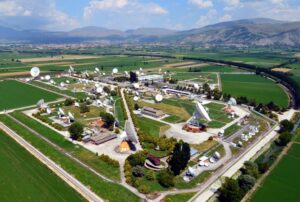
Telespazio intends to play a key role in the future in-orbit servicing market, providing customers seeking satellite relocation, refueling, repair or removal with the necessary space and ground-based capabilities.
The post Telespazio to play key role in satellite servicing market appeared first on SpaceNews.
Software testing problem delays Psyche launch
Friday, 24 June 2022 19:40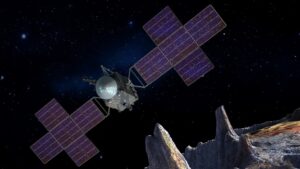
NASA’s Psyche asteroid mission will not launch this year as previously planned after the agency concluded there was not enough time to complete testing of the spacecraft’s software before its launch window closes.
The post Software testing problem delays Psyche launch appeared first on SpaceNews.
Telesat requests UK license to connect Lightspeed terminals
Friday, 24 June 2022 19:22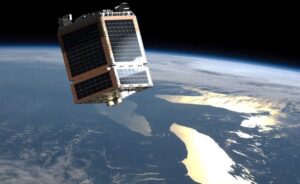
Telesat has applied for a U.K. license to connect broadband terminals with Lightspeed satellites it plans to start deploying in 2025 to low Earth orbit.
The post Telesat requests UK license to connect Lightspeed terminals appeared first on SpaceNews.
Space Force establishes intelligence unit to put sharper focus on orbital threats
Friday, 24 June 2022 16:55
The Space Force on June 24 established Space Delta 18, a unit that will run the National Space Intelligence Center at Wright Patterson Air Force Base
The post Space Force establishes intelligence unit to put sharper focus on orbital threats appeared first on SpaceNews.
NASA Announces Launch Delay for Psyche Asteroid Mission
Friday, 24 June 2022 16:41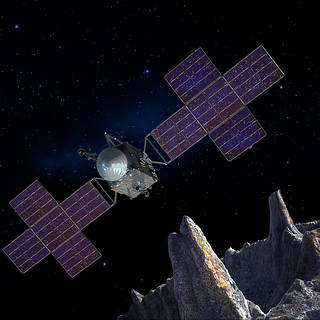 NASA announced Friday that the Psyche asteroid mission – the agency’s first mission designed to study a metal-rich asteroid – will not make its planned 2022 launch attempt.
NASA announced Friday that the Psyche asteroid mission – the agency’s first mission designed to study a metal-rich asteroid – will not make its planned 2022 launch attempt. NASA declares SLS countdown rehearsal complete
Friday, 24 June 2022 16:22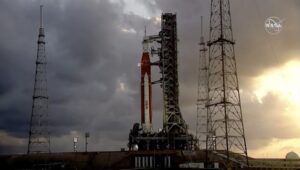
NASA managers say they have completed testing of the Space Launch System after a recent countdown rehearsal and are ready to move into preparations for a launch as soon as late August.
The post NASA declares SLS countdown rehearsal complete appeared first on SpaceNews.
NASA's Lunar Reconnaissance Orbiter spots rocket impact site on moon
Friday, 24 June 2022 15:45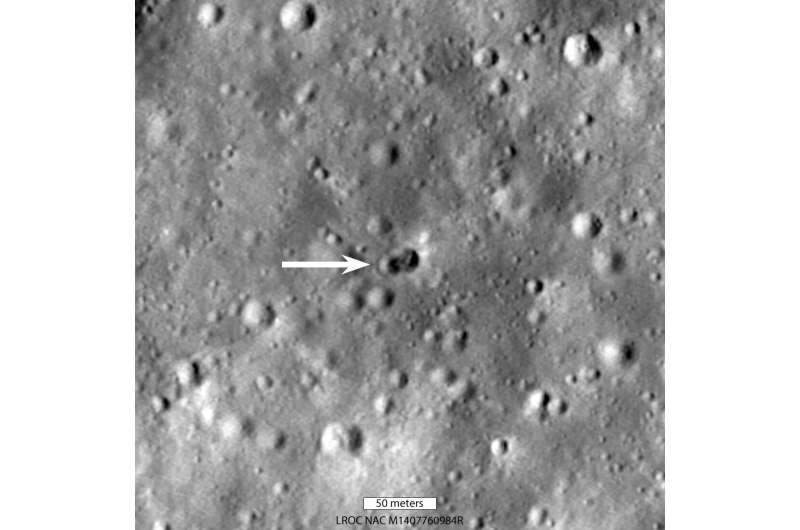
Astronomers discovered a rocket body heading toward a lunar collision late last year. Impact occurred March 4, with NASA's Lunar Reconnaissance Orbiter later spotting the resulting crater. Surprisingly the crater is actually two craters, an eastern crater (18-meter diameter, about 19.5 yards) superimposed on a western crater (16-meter diameter, about 17.5 yards).
The double crater was unexpected and may indicate that the rocket body had large masses at each end. Typically a spent rocket has mass concentrated at the motor end; the rest of the rocket stage mainly consists of an empty fuel tank.
Orbion to supply propulsion for General Atomics weather satellite
Friday, 24 June 2022 15:34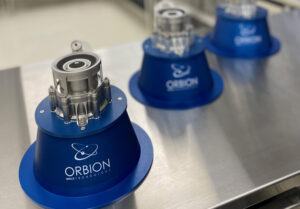
Propulsion startup Orbion Space Technology will supply thrusters for a U.S. Space Force prototype weather satellite under a contract with General Atomics Electromagnetic Systems.
The post Orbion to supply propulsion for General Atomics weather satellite appeared first on SpaceNews.
For the first time NanoAvionics has sold one of its orbital satellites
Friday, 24 June 2022 12:12 Mission integrator and smallsat bus manufacturer NanoAvionics has sold, for the first time, one of its operational satellites in low Earth orbit (LEO) including ongoing mission operations. Launched last year, NanoAvionics's shared 6U satellite mission "D2 / Atlacom-1" includes one of the world's first 1U-sized hyperspectral imager for remote sensing, which will be used by a yet unnamed Earth obs
Mission integrator and smallsat bus manufacturer NanoAvionics has sold, for the first time, one of its operational satellites in low Earth orbit (LEO) including ongoing mission operations. Launched last year, NanoAvionics's shared 6U satellite mission "D2 / Atlacom-1" includes one of the world's first 1U-sized hyperspectral imager for remote sensing, which will be used by a yet unnamed Earth obs Rocket Lab Prepares to Launch CAPSTONE Mission to the Moon for NASA
Friday, 24 June 2022 12:12 Rocket Lab USA, Inc. (Nasdaq: RKLB) is preparing to launch a satellite to the Moon for NASA as early as June 27th. The launch will take place from Rocket Lab Launch Complex 1 on New Zealand's Mahia Peninsula. The launch window opens 09:50 UTC on June 27th (21:50 NZST, June 27th). Back-up opportunities are available through July 27th to accommodate potential weather or technical delays to the lau
Rocket Lab USA, Inc. (Nasdaq: RKLB) is preparing to launch a satellite to the Moon for NASA as early as June 27th. The launch will take place from Rocket Lab Launch Complex 1 on New Zealand's Mahia Peninsula. The launch window opens 09:50 UTC on June 27th (21:50 NZST, June 27th). Back-up opportunities are available through July 27th to accommodate potential weather or technical delays to the lau Busek scales thruster production for Airbus OneWeb satellites
Friday, 24 June 2022 12:12 The in-space propulsion firm Busek Co. confirmed its supply of BHT-350 Hall effect thrusters for a range of missions supported by Airbus OneWeb Satellites (AOS). The Busek thrusters have been engineered and qualified to rigorous standards and are suitable for high-reliability, long-lifetime applications where thrusters are used for orbit raising, maintenance, and end-of-life de-orbit.
"We
The in-space propulsion firm Busek Co. confirmed its supply of BHT-350 Hall effect thrusters for a range of missions supported by Airbus OneWeb Satellites (AOS). The Busek thrusters have been engineered and qualified to rigorous standards and are suitable for high-reliability, long-lifetime applications where thrusters are used for orbit raising, maintenance, and end-of-life de-orbit.
"We BlackSky awarded Five-Year Joint Artificial Intelligence Center Contract for AI Data Readiness
Friday, 24 June 2022 12:12 BlackSky Technologies Inc. (NYSE: BKSY) was awarded a basic order agreement from the Joint Artificial Intelligence Center (JAIC) to create and optimize data sets for use in DoD AI models and applications. The JAIC agreement has a ceiling value of $241 million over five years.
"With demonstrated AI expertise in space-based dynamic monitoring, this agreement will open even more doors for Bla
BlackSky Technologies Inc. (NYSE: BKSY) was awarded a basic order agreement from the Joint Artificial Intelligence Center (JAIC) to create and optimize data sets for use in DoD AI models and applications. The JAIC agreement has a ceiling value of $241 million over five years.
"With demonstrated AI expertise in space-based dynamic monitoring, this agreement will open even more doors for Bla NASA Mars Orbiter Releasing One of Its Last Rainbow-Colored Maps
Friday, 24 June 2022 12:12 Scientists are about to get a new look at Mars, thanks to a multicolored 5.6-gigapixel map. Covering 86% of the Red Planet's surface, the map reveals the distribution of dozens of key minerals. By looking at mineral distribution, scientists can better understand Mars' watery past and can prioritize which regions need to be studied in more depth.
The first portions of this map were released
Scientists are about to get a new look at Mars, thanks to a multicolored 5.6-gigapixel map. Covering 86% of the Red Planet's surface, the map reveals the distribution of dozens of key minerals. By looking at mineral distribution, scientists can better understand Mars' watery past and can prioritize which regions need to be studied in more depth.
The first portions of this map were released Fine-grained rocks at Hogwallow Flats
Friday, 24 June 2022 12:12 Perseverance's exploration of the Hawksbill Gap area of the Jezero Delta continues! The rover has abraded at two different locations over the last few weeks. First, the rover abraded in the Devil's Tanyard area.
Unfortunately, the crumbly rocks at Devils Tanyard were broken and moved by the force of the abrasion. Nevertheless, the team was able to use the SuperCam and Mastcam-Z instruments
Perseverance's exploration of the Hawksbill Gap area of the Jezero Delta continues! The rover has abraded at two different locations over the last few weeks. First, the rover abraded in the Devil's Tanyard area.
Unfortunately, the crumbly rocks at Devils Tanyard were broken and moved by the force of the abrasion. Nevertheless, the team was able to use the SuperCam and Mastcam-Z instruments Drilling Again - Sols 3512-3513
Friday, 24 June 2022 12:12 Today was an exciting day of planning (and not just because of the thunderstorms here in southern California!). We planned a full drill of Avanavero, our first drill in over 6 months! The MAHLI image shows the spot after the DRT brush and our drill preload test.
In November 2021 we faced an anomaly with the brake mechanisms in the arm and out of an abundance of caution, the team decided to
Today was an exciting day of planning (and not just because of the thunderstorms here in southern California!). We planned a full drill of Avanavero, our first drill in over 6 months! The MAHLI image shows the spot after the DRT brush and our drill preload test.
In November 2021 we faced an anomaly with the brake mechanisms in the arm and out of an abundance of caution, the team decided to 
